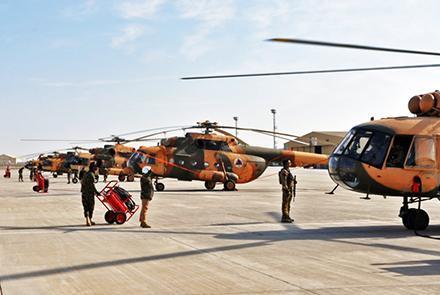A new report by the Pentagon’s Office of Inspector General has found that the Afghan ground controllers trained by the US and NATO cannot appropriately direct airdrops and lack the ability to properly coordinate attack missions by the Afghan Air Force (AAF) and the issue has increased the risk of civilian casualties and fratricide.
The Defense Department Inspector General, in an Aug. 12 report, stated that the Afghans’ inability to coordinate airdrops “increases the risk that Afghan National Defense and Security Forces] units operating in areas without airfields or helicopter landing zones will not receive critical supplies.”
Additionally, the inability of air liaison officers to coordinate strikes “could result in an increase in unsuccessful air-to-ground missions, as well as an increased risk of civilian casualties and fratricide,” the report said.
But the Afghan Ministry of Defense (MoD) reiterated that the Air Force has grown well and are playing a key role on the battlefields.
“They are in a better position as compared to the past and these forces have been very authentic and accurate in their operations in the battlefields,” said MoD spokesman Rohullah Ahmadzai.
“Most of the times the bombs hit residential areas and people’s houses and also NATO shipments. I think both the Afghan government and donor countries should come up with more seriousness when it comes to the training of the Afghan forces,” said MP Daud Kalakani.
Last month, the UN mission in Afghanistan said in a report that civilian casualties caused by the airstrikes had increased in the first six months of the current year.
During the first six months of 2019, UNAMA attributed 1,397 civilian casualties (717 deaths and 680 injured) to pro-government forces, a 31 percent increase from the corresponding period in 2018.
Pro-government forces caused 37 percent of all civilian casualties in the first half of 2019 (18 percent by Afghan national security forces, 12 percent by International Military Forces, 2 percent by Pro-Government armed groups and the remainder to undetermined or multiple pro-government forces).
The report says that UNAMA continues to express concern about the rising level of civilian harm as a result of aerial operations, particularly those conducted in support of Afghan forces on the ground and strikes on civilian structures.
UNAMA attributed 83 percent of the civilian casualties resulting from aerial operations to International Military Forces, nine percent to the Afghan Air Force, and the remaining eight percent to undetermined pro-government forces, the report says.



Comment this post